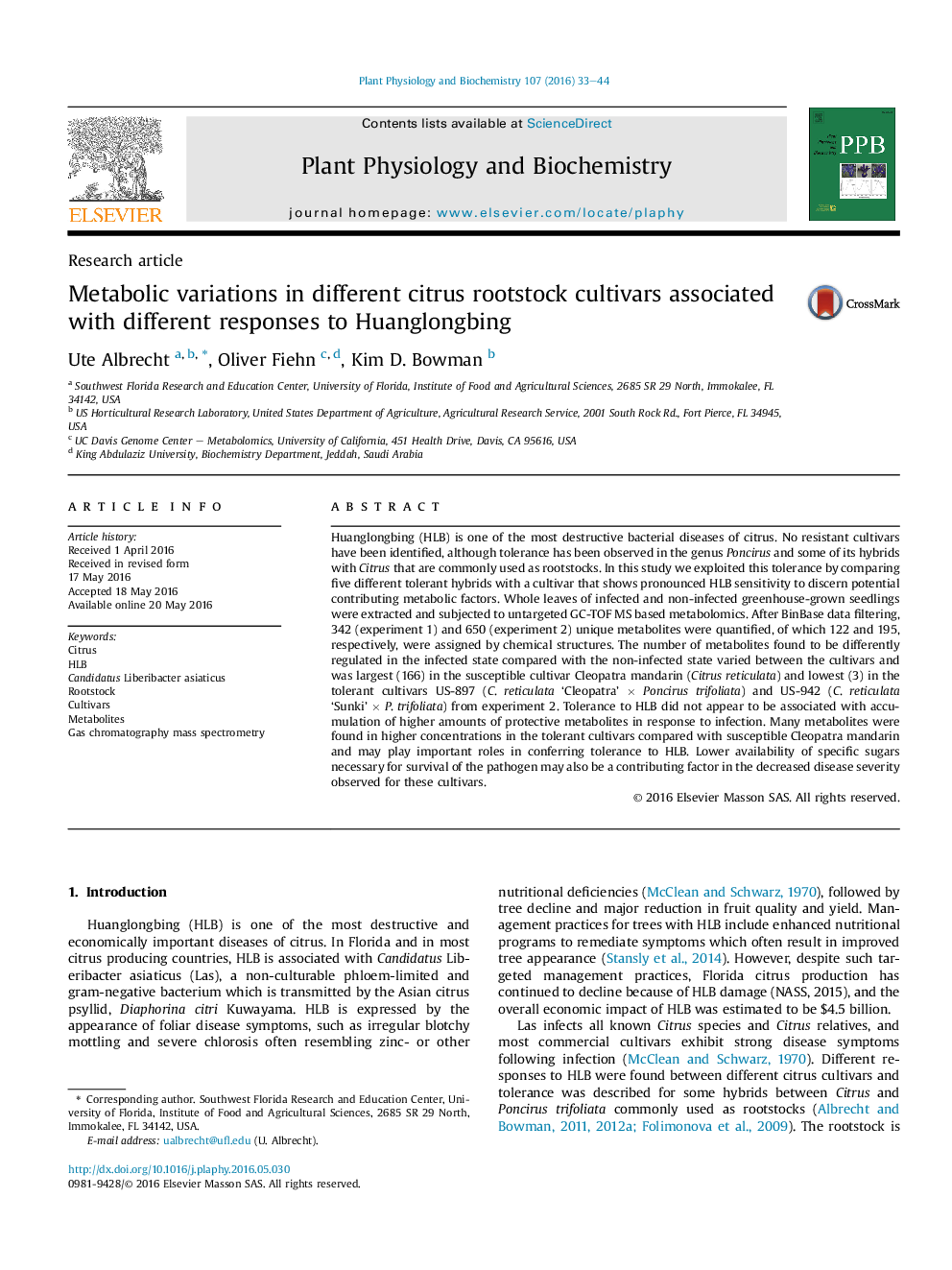| Article ID | Journal | Published Year | Pages | File Type |
|---|---|---|---|---|
| 2014649 | Plant Physiology and Biochemistry | 2016 | 12 Pages |
•GC-TOF MS metabolomics was used to profile citrus rootstock cultivars.•Metabolite profiles varied in response to disease, particularly in the susceptible cultivar.•Tolerance was not related to disease-induced increase of protective metabolites.•Tolerance may be associated with higher constitutive amounts of cultivar-specific metabolites.
Huanglongbing (HLB) is one of the most destructive bacterial diseases of citrus. No resistant cultivars have been identified, although tolerance has been observed in the genus Poncirus and some of its hybrids with Citrus that are commonly used as rootstocks. In this study we exploited this tolerance by comparing five different tolerant hybrids with a cultivar that shows pronounced HLB sensitivity to discern potential contributing metabolic factors. Whole leaves of infected and non-infected greenhouse-grown seedlings were extracted and subjected to untargeted GC-TOF MS based metabolomics. After BinBase data filtering, 342 (experiment 1) and 650 (experiment 2) unique metabolites were quantified, of which 122 and 195, respectively, were assigned by chemical structures. The number of metabolites found to be differently regulated in the infected state compared with the non-infected state varied between the cultivars and was largest (166) in the susceptible cultivar Cleopatra mandarin (Citrus reticulata) and lowest (3) in the tolerant cultivars US-897 (C. reticulata ‘Cleopatra’ × Poncirus trifoliata) and US-942 (C. reticulata ‘Sunki’ × P. trifoliata) from experiment 2. Tolerance to HLB did not appear to be associated with accumulation of higher amounts of protective metabolites in response to infection. Many metabolites were found in higher concentrations in the tolerant cultivars compared with susceptible Cleopatra mandarin and may play important roles in conferring tolerance to HLB. Lower availability of specific sugars necessary for survival of the pathogen may also be a contributing factor in the decreased disease severity observed for these cultivars.
